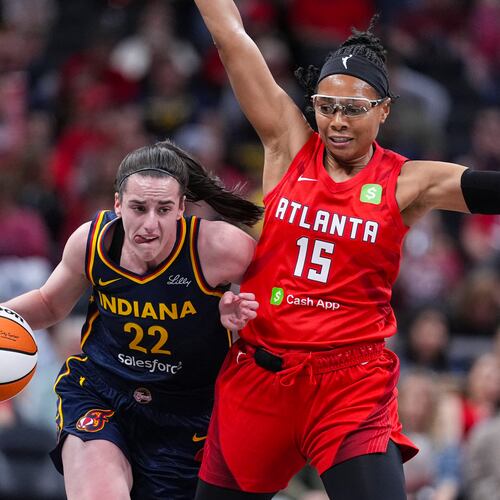To the side of Georgia State’s football practice facility is an area that is set off by flags marking where the strength-and-conditioning facility may one day be built.
Those flags have been there quite a while, waiting on the construction to start.
Georgia State’s football team is in a similar state as coach Trent Miles begins his third season with the team. The biggest difference between his squad and the strength-and-conditioning facility is that the ground work for the team has been established.
Now, it’s time to start building what Miles is confident will become a winning program, despite winning one game in its past two seasons since he succeeded Bill Curry as coach.
To get there, there are five things the Panthers will continue to work on this spring. Some — develop mental toughness, increase competition — are shared by many teams. Others, such as develop an ability to run the ball and to stop opponents from doing so, are problems Georgia State has been trying to solve for years.
Develop mental toughness. Miles said the team wasn't mentally tough enough last year.
“We lost some games at the end where we made some critical mistakes,” he said. “That goes back to mental toughness. You can’t control holding calls, pass interference. But you can control not lining up correctly or not getting into the right gap.”
As evidence, the Panthers lost four games by a combined 10 points and another by 10. The lack of mental toughness combined with injuries that decimated the team’s depth resulted in blowout losses in six of their past seven games.
To become stronger mentally, Miles said the players will be consistently put into situations in practices where they must succeed.
Develop competition at the positions. With the exception of a few spots on offense, Georgia State's starting lineup at the end of the spring may look very different than the one that ended the 2014 season.
A few of the changes will be the result of graduation. More could be the result of a lack of production, particularly on a defense that allowed 43.3 points and 497.1 yards per game last season.
The competition will start immediately because the squad will have more than 70 players on scholarship participating in the spring, compared with the 40-50 who participated last year.
The number this spring is high because it includes 17 midyear enrollees.
Better understanding of schemes. Georgia State had a weird two weeks last season. In one game it gave up a program-most 69 points and 660 yards in defense in a 69-31 loss to Georgia Southern, followed a week later by a program-low 45 yards of offense in the snow in a 44-0 loss at Appalachian State.
A better understanding of the schemes may have prevented that and will help the team reduce its turnovers on offense while creating more on defense. The Panthers’ turnover margin of minus-1.83 per game was the worst of the 125 FBS teams. Quarterback Nick Arbuckle threw 17 interceptions, blemishing his 23 touchdown passes, as part of the team’s 30 turnovers. The defense intercepted only three passes and recovered only five of 14 fumbles forced.
Develop great fundamentals and techniques. As evidenced by the win-loss record and the turnovers, the Panthers have work to do in these areas.
“When it gets into live action you get into the habits you create,” Miles said.
The staff will have at least one new assistant, defensive backs coach Eric Lewis and outside linebackers coach Tony Samuel to teach those fundamentals and techniques.
The remainder of the staff has been here at least through last season, which should make the teaching easier because of the familiarity between most of the players and the coaches.
Develop a better ability to run and to stop the run.
“We did it in spurts, but you have to do it consistently,” Miles said. “You have to be able to slow the run down, which we have failed to do.”
Georgia State’s 96.3 rushing yards per game ranked 120th of 125 FBS teams. The team was hurt by the loss of Krysten Hammon, who left the program, and Kyler Neal and Jonathan Jean-Bart, who were Nos. 1 and 2 on the running back depth chart, to season-ending injuries in the loss at Washington in the fourth game. It also was hurt by the loss of starting left tackle Michael Ivory to a season-ending injury.
Neal is healthy and will be joined by new signees in Kendrick Dorn and Demarcus Kirk in the spring. Ivory is working his way back, and the line will feature several mid-year transfers: 305-pound Kelepi Folau, 350-pound Dom Roldan and 305-pound Tyler Simonsen, who will create more competition.
The Panthers had the second-worst rushing defense among FBS teams, allowing 303.4 yards per game. Much of the focus in recruiting was on improving the defense and the results are new defensive linemen DeQueszman Kelley (from Coffeyville Community College) and Julien Laurent (New Mexico Military Institute), new linebackers Alonzo McGee (UAB), Ed Curney and Kaleb Ringer (Butler CC) and new safeties Bobby Baker (UAB) and Cloves Campbell (Scottsdale CC), among others, to improve the competition and depth.
About the Author
Keep Reading
The Latest
Featured


